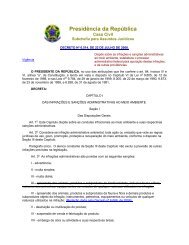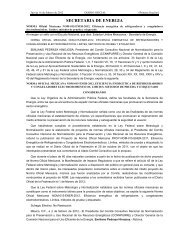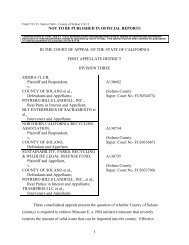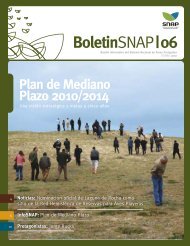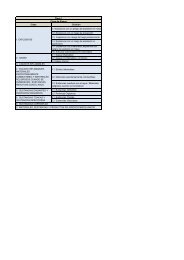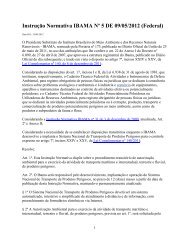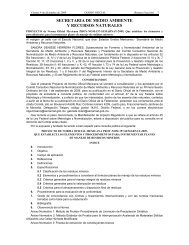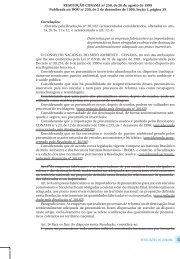OceAn science OceAn science OceAn science
OceAn science OceAn science OceAn science
OceAn science OceAn science OceAn science
Create successful ePaper yourself
Turn your PDF publications into a flip-book with our unique Google optimized e-Paper software.
Comparative Analysis of Marine Ecosystem<br />
Organization<br />
The objectives of this near-term priority is to improve the management and sustainability<br />
of marine ecosystems by better quantifying ecosystem dynamics in relation to human activities.<br />
This improved quantification will be used in evaluating the effectiveness of MPAs<br />
in achieving management objectives. MPAs incorporate an array of managed marine<br />
ecosystems with differing levels of protection, from areas that allow multiple uses to those<br />
that restrict take and/or access. A better scientific understanding of the function and impacts<br />
of MPAs will assist in making decisions regarding alteration of current MPAs and<br />
potential designation of new U.S. MPAs.<br />
Approach<br />
Three primary research activities will address this near-term priority. First, new modeling<br />
and analysis procedures will be developed to provide the foundation for comparative<br />
analyses and evaluation. This development will also address a key challenge in providing<br />
reliable forecasts of biological phenomena supporting ecosystem-based management: the<br />
paucity of information on mechanisms controlling complex behaviors within ecosystems.<br />
Second, using these quantitative methods, data collected by agencies and academic scientists<br />
will be consistently applied to selected ecosystem types in order to provide improved<br />
understanding of ecosystem response to environmental change. Third, fieldwork, analysis,<br />
and modeling are needed inside and in adjacent areas outside selected MPAs to understand<br />
their impacts and evaluate their success on several scales. Agency contributions<br />
necessary to address this priority include:<br />
• NSF—Improve ways of incorporating uncertainty in model-parameter estimates,<br />
the role of size and age structure in population demographics, and spatial dynamics.<br />
Facilitate application of quantitative frameworks to data sets to synthesize dynamics<br />
across ecosystems, and conduct investigations with theory, design, observations, and<br />
experiments to interpret the ecosystem and socioeconomic impacts of MPAs.<br />
• NOAA—Develop quantitative ecosystem models in partnership with academic and<br />
agency partners, apply appropriate data from multiple in-house monitoring databases,<br />
and interpret results. Analyze the MPA role in relation to conventional fisheries<br />
management tools, in addition to other ecosystem variables.<br />
• National Aeronautics and Space Administration (NASA)—Expand existing biological<br />
and biogeochemical models to encompass the function of ecosystems under study,<br />
and facilitate incorporation of satellite ocean biological and biogeochemical data into<br />
models to improve spatial ecosystem-function analyses. Examine quantified varia-<br />
77




